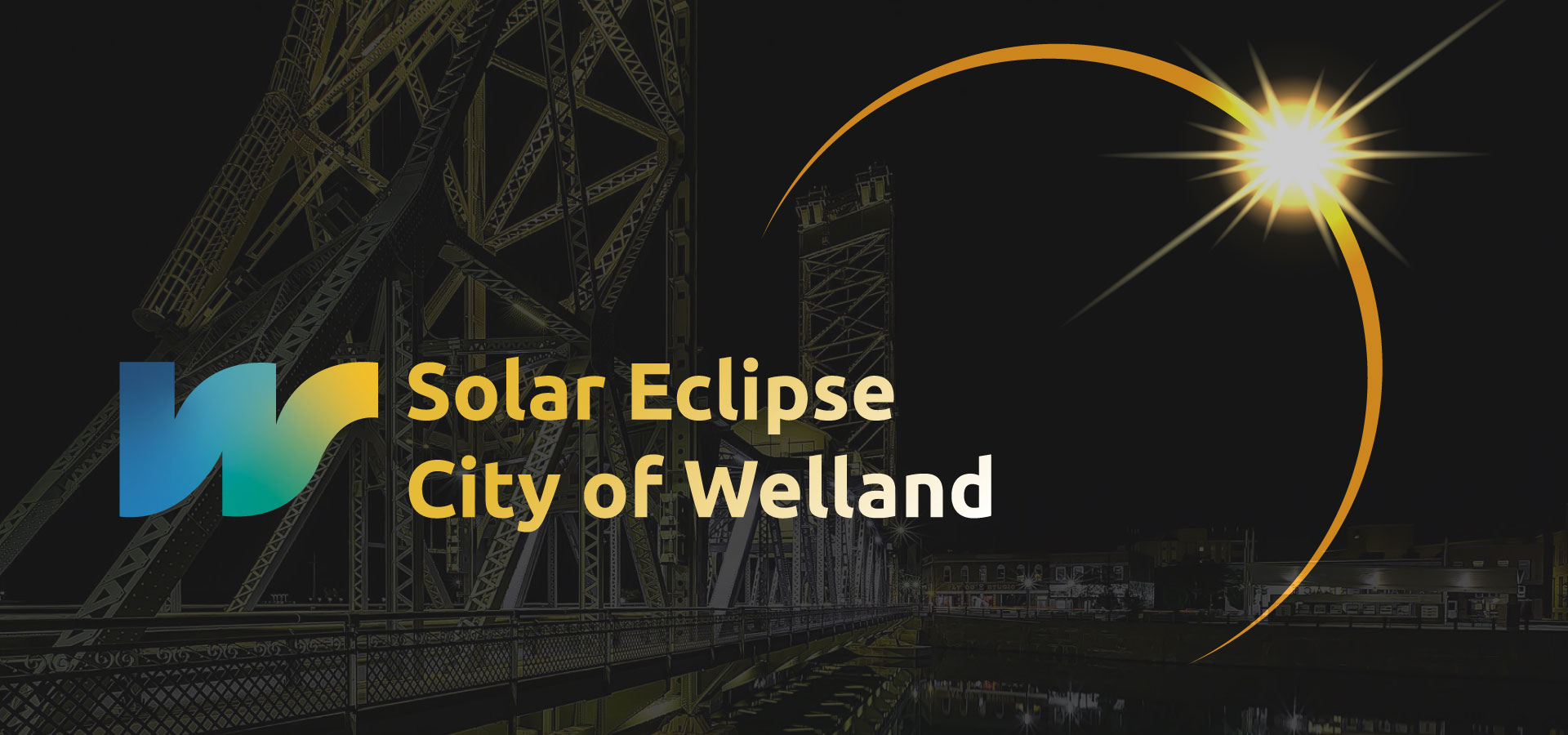
Total Solar Eclipse
Behold a once-in-a-lifetime event in the sky on April 8.
The city of Welland, municipalities across Niagara, and many parts of the world will experience a total solar eclipse. As the eclipse moves northeast across North America, it’ll pass directly over Welland. This is an historic total eclipse and our city is in the direct path of totality. That’s the astrological way of saying the moon’s shadow will completely cover the sun, causing the sky to darken for nearly four minutes. Such a spectacular event isn’t going to happen again for another 20 years, at least, so it’s time to prepare for an unforgettable experience.

- All City of Welland locations will be open on April 8 and operating with a reduced staff capacity.
For anyone visiting the Welland Community Centre, please keep in mind that regularly scheduled paid programs will not be running from 1 to 5 p.m.; however, the library, computer lab, woodshop, and billiards room will be available.
Visit the Niagara Region Transit website for information about transit services or call 1-833-NRT-LINE (1-833-678-5463)
- To avoid damaging your eyesight, do not look at the eclipse without using an ISO-certified solar filter or eclipse glasses. Use eclipse glasses that meet the ISO 12312-2 standard and check that the certification number is printed on the glasses.
- Always inspect your solar filter before use; discard it if scratched, punctured, torn, or otherwise damaged. Read and follow any instructions printed on or packaged with the filter.
- Always supervise children using solar filters.
- If you usually wear eyeglasses, keep them on. Put your eclipse glasses on over them or hold your handheld viewer in front of them.
- Stand still and cover your eyes with your eclipse glasses or solar viewer before looking up at the bright sun. After looking at the sun, turn away and remove your filter — do not remove it while looking at the sun.
- Do not look at the uneclipsed, partially eclipsed, or annularly eclipsed sun through an unfiltered camera, telescope, binoculars, or other optical device.
- Similarly, do not look at the sun through an unfiltered camera, telescope, binoculars, or any other optical device while using your eclipse glasses or handheld solar viewer in front of your eyes — the concentrated solar rays could damage the filter and enter your eyes, causing severe injury.
- Seek expert advice from an astronomer before using a solar filter with a camera, telescope, binoculars, or any other optical device; note that solar filters must be attached to the front of any telescope, binoculars, camera lens, or other optics.
There will be an influx of traffic throughout the city on April 8. To help ease this congestion, viewing the eclipse from your neighbourhood is recommended, it's as easy as going to your backyard, standing on your front porch, or walking to your local park.
If that’s not possible, these viewing locations are available and public washrooms will be open from noon to 5 p.m.
- Rec Rentals @ the Docks – 129 Lincoln St.
- Welland Stadium – 90 Quaker Rd.
- WIFC North Course – 16 Townline Tunnel Rd.
Looking at the eclipse without specialized eye protection is unsafe and can damage your eyesight. The safest way to view the eclipse is with ISO-certified eclipse glasses.
For a list of reputable suppliers, please visit https://eclipse.aas.org/eye-safety/viewers-filters
A total solar eclipse happens when the moon passes between the sun and earth, fully blocking the sun. Locations where the moon’s shadow completely covers the sun are referred to as being in the path of totality. People in these areas will experience a total solar eclipse, with the sky darkening as it would at dusk. Depending on the weather, people along the path of totality will see the sun’s corona, or outer atmosphere, which is usually obscured by the sun’s brightness.
Clear skies are necessary for the full eclipse experience; however, daytime darkness is still noticeable with cloud cover.
Important information
- Date: Monday, April 8
- Eclipse timeline: 2:04 p.m. to 4:31 p.m.
- Total solar eclipse: 3:18 p.m. and lasting around four minutes
Viewing locations
Resources